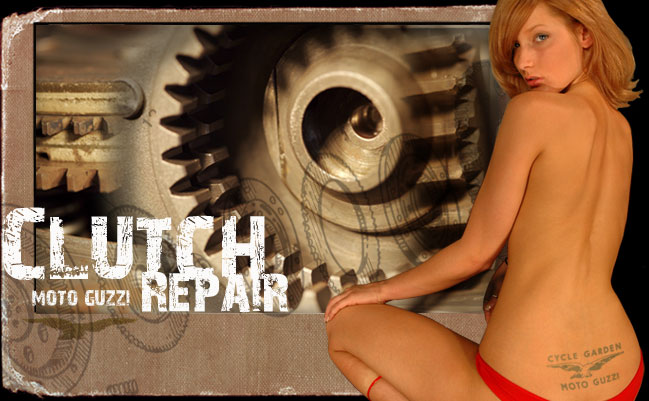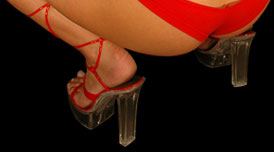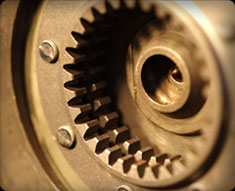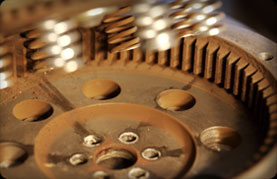

Guzzi riders rarely consider their bike's clutch, but signs of wear can certainly "creep" up and grab your attention. Say you're in first gear at a stoplight with the clutch pulled in and your Moto Guzzi still wants to inch forward. This occurrence could stem from a number of reasons - grooved flywheel splines, a worn clutch hub, or possibly bent clutch plates. When those warning signs do pop up, it's better to play it safe and bring your bike into the shop for a quick clutch inspection.
Another common symptom of a worn clutch is: while in high gear or running at higher speeds, twisting of the throttle causes the engine to climb in revolutions but speed doesn't increase.
 That's a sure sign of worn clutch plates and/or springs, all pointing for the need of clutch repair.
That's a sure sign of worn clutch plates and/or springs, all pointing for the need of clutch repair.
The major working components of Guzzi's dry clutches are two fibrous friction plates and one steel intermediate plate. Friction plates take the wear and tear of daily riding and like brake pads, slowly wear over time. So when your clutch begins to drag or slip, it's usually time to replace the plates, the input hub and perhaps the clutch springs. If the intermediate plate is worn or bent,
 you may have problems with clutch grabbing.
you may have problems with clutch grabbing.
After repair your new clutch will engage smoothly, and to keep it that way, there are several things you can do to extend the life of your clutch; these include proper adjustments, lubricating the clutch cable and avoid "riding" the clutch while in motion. Additionally, keep some free play in the clutch cable to prevent it from dragging or not disengaging fully. Moto Guzzi clutches can last 20K miles (if you're extremely rough on them) or well over 100K miles with care and maintenance.



























































































